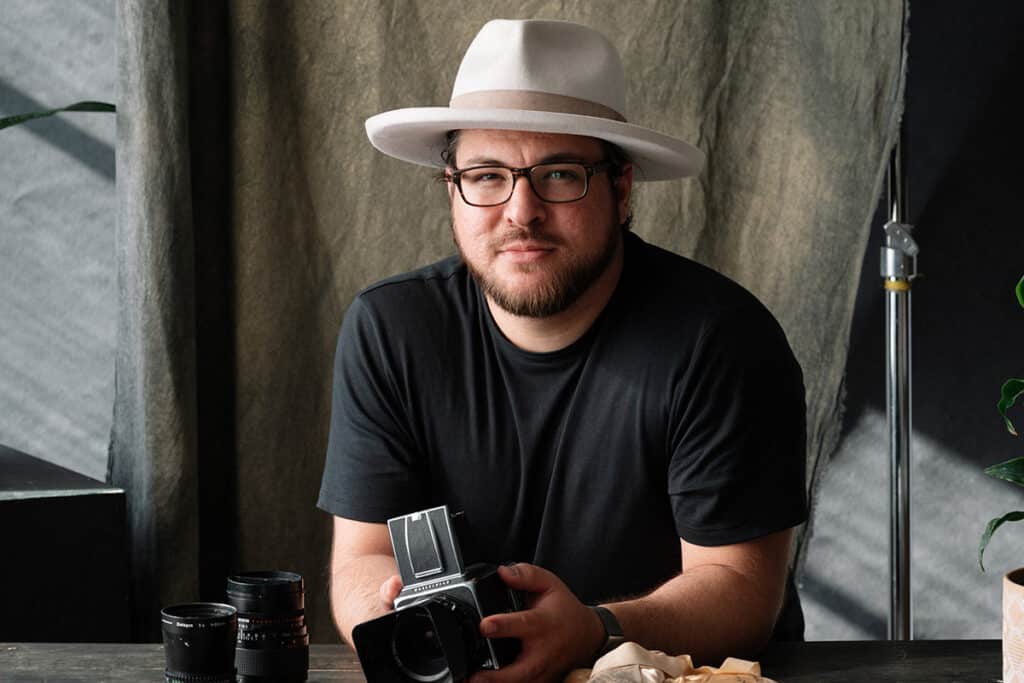Four San Antonians talk candidly about passion for their interests, commitment to family and community and vision for the future
It’s not easy to define the contemporary San Antonio woman. Like elsewhere in the United States, women’s lives have changed profoundly in the last 40 years, largely thanks to the women’s movement and general socio-educational trends. While the change has been mostly for the better, it is still a work-in-progress. Today, 75 percent of married women with school-age children work outside of the home, but many report being overstressed and torn between career and family. At the same time, while there are many successful female professionals,
relatively few have reached the pinnacle of their professions. What’s more, the majority of women still earn 25 percent less than their male
counterparts. “There is a lot to celebrate, but there is more ground to be covered, more to be done,” says Kirsten Gardner, Ph.D., who teaches courses on women and gender studies at the University of Texas at San Antonio. It is probably safe to say that the majority of women are trying to forge a modus vivendi that takes advantage of the new freedoms without trampling on their essential female qualities. Yet, statistics and social analysis can tell us only so much. Ultimately, it’s how real women navigate modern life that best embodies who we are today. With that in mind, we talked to several San Antonio women about how they made their choices, what they care about and how they see life in the Alamo City.
SARAH LUCERO
Asked how she would describe the San Antonio woman, KENS 5 TV anchor Sarah Lucero hesitates for only a moment before answering.
“It’s someone who strives to improve herself and her quality of life, someone who cares about the community and wants to contribute to her community.”
Insightful words that certainly describe Lucero herself. Though born in modest circumstance on the near North Side, she not only has created a better life for herself but is now in a position to help and influence others. As a representative of the station, Lucero lends a hand to a number of causes, but she feels a special responsibility toward poor Hispanic children who are looking at the world with the same eager eyes as she did a couple of decades ago.
“I remember watching TV (as a child) and seeing no one who looked like me,” she says with a tinge of resentment. “Today, I want to be that person on TV that I never saw when I was growing up. I want to be that for the 8-year-old who is watching. They need role models to identify with.”
A mother of two young boys, Lucero frequently focuses her reporter’s attention on issues affecting families and youth. Her special news segment, “Family First,” which airs at 5 p.m. Mondays and Fridays, deals with subjects such as obesity, grief, teens and suicide, the value of night school and even whether or not it’s cool to be a virgin.
“Now that I have a family of my own, I like covering subjects that parents are interested in or anything to do with children. I just feel an obligation to help parents,” she says. She also knows firsthand just how difficult parenting can be. Her mother had to work two jobs at a minimum wage to support Sarah and her younger sister while making sure that both stayed in school and got an education. Money was so tight that Lucero had to drop out of Incarnate Word College because the family could not afford it. She ended up getting a degree in English communication from St. Mary’s University and subsequently landed a job with the local Univision station.
“When my parents divorced, my mother, who came here at 17 as an immigrant, didn’t even know how to write a check or pay the bills,” says Lucero. “I always knew I wanted to work and never depend on a man.”
While still in college, the budding reporter met her future husband, heart surgeon John Calhoon, when she took a job as a bartender at a local private club. Although they married two years later, she soon left her groom behind in San Antonio to join the CBS affiliate in Chicago, where she spent nearly three years. It was a great career move, but the long distance commute was hardly ideal for the marriage. Lucero decided to return and start a family.
She now spends the mornings with her boys, arriving at KENS around 2 p.m. to get ready for her two daily newscasts at 6 and 10 p.m. When there are outside commitments, her day may very well stretch from noon to 11 p.m. A good baby-sitter and her mom help with the kids, but she still has to juggle roles and duties.
“We, women, have so many choices today. But we have to figure out what’s important to us,” says Lucero with conviction. “I am still looking for that balance between priorities. A lot of us are. Something has to be sacrificed. You can’t do
it all.”
PATRICIA WALLACE
Six months into her first pregnancy, Patricia Wallace quit her commercial real estate job, never to look back.
“I wanted to be the one to raise my child. I wanted to be involved with school and field trips and all that,” says the stay-at-home-mom while sipping Coke in her comfortable family room overlooking a woodsy yard. “I never had time to be bored or miss work. I loved being home.”
Now 13 years later, she has four children ranging in age from 7 to 13. On most afternoons after school, Wallace spends hours driving the kids to lessons, sport practices or games, and sometimes she picks up a few of her friends’ kids, too. The schools her children attend know they can count on her for help. She spent a recent school holiday, for instance, painting 55 posters and banners for the Garner Middle School football team.
Wallace is PTA president at the school, which both her eldest daughter Brittany and her 11-year-old son Campbell attend. She also serves on the PTA board at Northwood Elementary School where her younger two, Baker and Carolyn, go to school. Discussing school matters at home is so easy when Mom knows everybody and everything, says daughter Brittany.
Devoted as she is, Wallace also will lend a hand in the school office, serve on a districtwide curriculum committee or do just about anything else that’s needed. “To me, education is the single most important issue, and that’s why I am involved in the schools,” she says thoughtfully. “Today, there are fewer women available to do that, so I feel an additional responsibility to help not only for the sake of my children but for other children as well. The more involved you are in their schools, the better your kids will do.”
In her “spare time,” Wallace has been an active volunteer on other fronts as well. As the president of the local Junior League chapter last year, she was overseeing three full-time employees, a $500,000 budget and a multitude of charitable projects.
No wonder she so often hears people say, “I don’t know how you do it all!”
But the dynamic San Antonian, who has a degree in finance from Texas A&M University, feels that she has the best of both worlds — time with her children and the opportunity to engage in responsible work on her own terms. Still, as Lucero says, something has to be sacrificed, and in the case of Wallace and her husband Bruce, it’s additional income. And perhaps some clarity as to what Mom does. When a preschool teacher asked 5-year-old Carolyn about her mother’s occupation, the little girl said: “My mommy goes to meetings.”
MARTHA MARIE GARZA
Every morning Dr. Martha Marie Garza starts her day with a walk and a prayer. On this particular morning in October, she already has performed an emergency surgery on a patient with heavy bleeding before arriving to meet us in her office.
“Normal surgery day is Tuesday, but there are always emergencies,” she explains. Removing her surgical shoe-covers. “This particular lady couldn’t wait.”
A gynecologist with a subspecialty that focuses on infertility and gynecological endocrinology, Garza deals with a wide range of situations, from delivering babies and treating infertility to counseling post-menopausal women. The latter is something she especially enjoys. A big advocate of healthy nutrition and exercise, she always has avoided prescribing the so-called hormone replacement therapy (HRT), which many physicians routinely handed out to post-menopausal women as prevention against heart disease and osteoporosis.
“I never liked hormones,” she says calmly. “Too often, they were given to women like M&Ms. We were taught that they were protective against heart disease, but the more I know about medicine, the more I am weary of medications. I teach women how best to prepare for this most natural period of their lives without drugs. I like teaching women about their bodies.”
Garza’s approach received a big boost in July when the nationwide Women’s Health Initiative study announced that its results clearly indicated that HRT does not protect against cardiovascular problems and can, in fact, be harmful. Needless to say, she is no fan of birth control pills, either, which contain another, much stronger hormone medication given rather indiscriminately to younger women. As a healer, she is opposed to the very idea of suppressing perfectly healthy reproductive systems by artificial means. Physicians don’t do that in any other area of medicine, she points out.
Garza’s desire to heal was born in her youth when she watched her gynecologist father treat the sick and poor in Mexico during family vacations. She grew up in a medical milieu, as two of her brothers became physicians as well, and a third one chose dentistry. Following medical school here — where she was one of only 20 women in a class of more than 200 — Garza married a Brazilian colleague, moved to Sao Paolo and had a daughter, but the marriage didn’t last. Barely two years later, she was back at the Health Science Center for her residency in OB/GYN.
But what changed her life and her approach to medicine was a visit to the Holy Land eight years ago.
“I came back with a desire to practice medicine the way Christ would,” she says. “Some things had to change in my practice, and they did.”
Thanks to her new awareness, Garza belatedly discovered natural family planning which, she thinks, is much more in tune with the woman’s nature than artificial birth control. Her patients learn to follow the rhythms of their bodies instead of “messing with nature.”
As a doctor, she would like to see widespread education in natural family planning in San Antonio, as well as a deeper concern for nutrition, exercise and spiritual health. At the same time, she would like to encourage more women to stay home with their children, even though as a single mom, she wasn’t able to do it.”Single motherhood was a challenge,” admits Garza, who has just become a grandmother at 48. “My only regret is that I wasn’t able to stay at home with my daughter as she was growing up.”
MARY FINCH
The first thing one notices upon entering Mary Finch’s classroom at Timberwilde Elementary School is an aquarium tank with no water. That’s where the veteran teacher and her gifted-and-talented students raise monarch butterflies. “It teaches them respect for life, and it’s great fun,” says Finch, who has been a teacher since 1966. The metamorphosis from caterpillar to cocoon to butterfly fascinates the children, but the crowning moment comes when the entire class gathers to release the newly winged creatures into the air. Last year, they raised 870 specimens and sent photos of the children releasing them to the families of the New York firefighters who died on 9/11. “According to an Indian legend, the soul of the departed loved one continues to live in a butterfly,” explains Finch. At the time when teachers are leaving the profession complaining about low pay and difficult students, Finch, who has a master’s degree in educational administration, decided to stay in the classroom rather than join the managerial ranks.
“The children need us,” she says. “Currently, as a teacher in the gifted-and-talented program, I have the best students in terms of being educable, but even these children can be very needy. The suicide rate among gifted kids in high school is high. My job as a teacher is to provide guidance for them. We need them as the leaders of the future.” For Finch, teaching is more a mission than a job. Even when she had to move from place to place with her Army officer husband, she kept teaching in all those places, earning recognition as Teacher of the Year on several occasions. Some 15 years ago, she realized the value of computers for drill and practice and also as a research tool, and made it her business to educate herself and her colleagues in the use of computer technology. In 1998, the Northside district named her the Technology Facilitator of the Year, and in 2000, she expanded her techno-scientific knowledge by taking part in NASA’s Educators Workshop at the Dryden Flight Research Center in California.
Following her husband Alfred’s retirement from the military, the couple chose to settle in San Antonio only after careful research. They like the mixture of cultures and the comfortable balance between urban amenities and the proximity of rural areas. One of their daughters also is a teacher in the Northside district.As an educator, Finch also appreciates kid-friendly institutions such as the Witte Museum, the Children’s Museum and the Challenger Center at Randolph AFB. But there is one thing she would like to change in her district and citywide.”At present, there are no part-time positions for teachers and yet, there is a need for that, especially for older, master professionals who could help nurture and inspire the younger colleagues,” she says.So, what makes a great teacher? “It’s a question of attitude and passion, not of technique,” she answers. “If you have the passion the children feel it, and when you have their hearts, it’s not a big step to getting their minds.”
By Jasmina Wellinghoff
Photography Liz Garza-Williams




